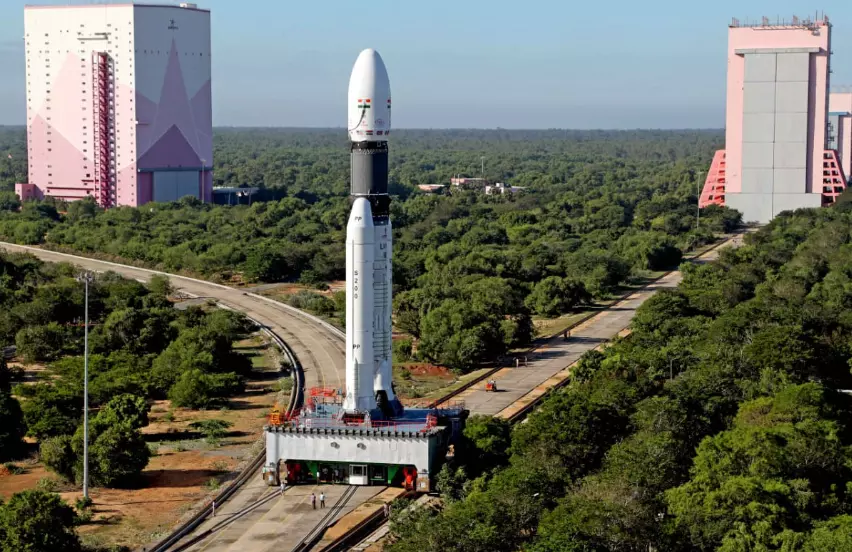
History repeats itself as veteran scientist holds countdown 60 yrs after India's first sounding rocket launch
Kale said he continued doing the countdown for rocket launches for some more time, as the timing of the launch was very critical back then

Six decades ago, young Pramod Purushotam Kale confidently counted down 20 seconds, during the launch of a sounding rocket from the makeshift Equatorial launch pad at Thumba near Thiruvananthapuram in Kerala, when the country’s space programme was in its nascent stage.
On Saturday, history repeated itself as Kale, an octogenarian and a devoted student of Vikram Sarabhai at the space centre named after the legendary scientist, took the microphone, guiding the countdown for the launch of the rocket once again. The event was to mark India’s first sounding rocket blasting off from the same spot on November 21, 1963.
“The most important thing to remember is that our first sounding rocket launch was late in the evening after the sunset here, and from the block house itself, I was doing the countdown.” “Because I had developed the clock, and that clock was counting up, not down. That's why they had asked me to do the countdown,” a happy Kale recalled those years, which paved the way for the development of the space sector in the country and the birth of the Indian Space Research Organisation (ISRO) in 1969.
Kale, hailing from Ahmedabad and one who had gone on to become a Director of the Vikram Sarabhai Space Centre (VSSC), said he continued doing the countdown for rocket launches for some more time, as the timing of the launch was very critical back then.
“Our exact time of launch at that time was very, very important because there were four different stations from where we had to photograph the sodium vapour cloud,” Kale recalled.
‘More opportunities now’
Sixty years later, Kale said the younger generation has far more opportunities than they had at that time. “The constraints are now very few. We have made significant progress, and we have received substantial contributions from industries and educational institutions. We also enjoy excellent government support,” he added.
Reflecting on the early days, Kale recalled that in the initial batch nurtured by Vikram Sarabhai, only the late APJ Abdul Kalam was an aeronautical engineer. “Myself, Prakash Rao, and Ramakrishna Rao were from the Physical Research Laboratory. Mr. Aruvamudhan joined us from Atomic Energy in Mumbai, Easwar Das came from the Central Workshop in Atomic Energy, AGS Murthy from Ammunition Factory, MSV Rao from the Meteorological Department, and Kalam, among us, was the only one who was an aeronautical engineer,” he said.
Sarabhai formed this batch and sent the members for training in rocket production, launching, and rocket instrumentation in January 1963. When they returned, the work at Thumba near here, where the VSSC is located, was just beginning to progress.
“It was a very difficult time. Even reaching here from Ahmedabad took so long. Now, things have changed so much,” he said.
Kale expressed pride in being a part of VSSC and India's space science community. He is happy that their collective efforts have paid rich dividends and that the organisation has grown substantially. Kale believes that ISRO will soon achieve its main mission through Gaganyaan and succeed in creating a space station.
After decades of service with ISRO, Kale retired as the director of VSSC, the place where he started his journey in space science.
While many of his co-workers have passed away, those still around were seen hugging Kale inside the control centre at Thumba when he came down after the launch of the sounding rocket, sharing memories of a time when rocket parts were carried on bicycles to the rocket launch station.
About sounding rocket
A sounding rocket, sometimes called a research rocket or a suborbital rocket, is an instrument-carrying rocket designed to take measurements and perform scientific experiments during its suborbital flight.
According to ISRO, sounding rockets are one or two-stage solid propellant rockets used for probing the upper atmospheric regions and for space research. They also serve as easily affordable platforms to test or prove prototypes of new components or subsystems intended for use in launch vehicles and satellites.
Sounding rockets are advantageous for some research because of their low cost, relatively short lead time (sometimes less than six months) and their ability to conduct research in areas inaccessible to either balloons or satellites. They are also used as test beds for equipment that will be used in more expensive and risky orbital spaceflight missions. The smaller size of a sounding rocket also makes launching from temporary sites possible, allowing field studies at remote locations, and even in the middle of the ocean, if fired from a ship.
(With agency inputs)

